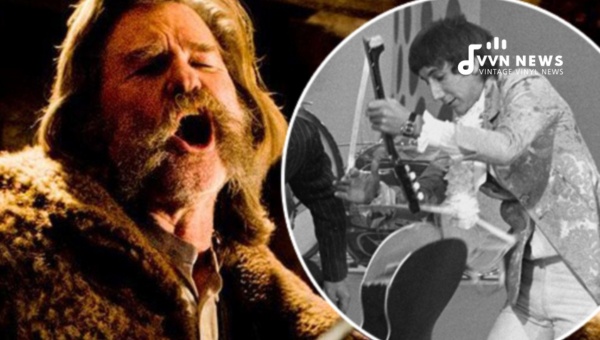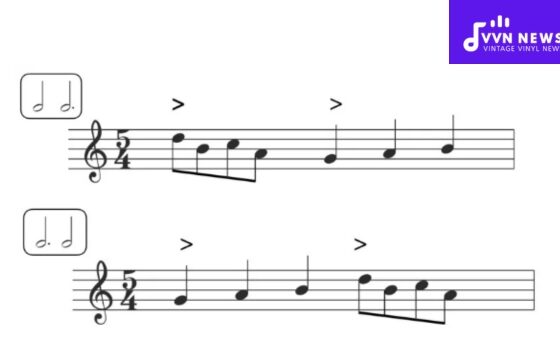Still fresh in my mind is that incredible moment when Kurt Russell smashes an antique Martin guitar.
There’s nothing quite like the sight of Hollywood’s good guy turning into a musical villain – if only in the pretend world.
This was not your everyday filming anecdote; this moment made headlines and sent shockwaves through film and music enthusiast communities alike.
In classic cinematic style, the event found roots in Quentin Tarantino’s homage to the Old West, “The Hateful Eight.”
The controversial scene combined the drama of the film and a tinge of real-life angst that made viewers sit up and notice.
It’s not often you see someone taking a swing at a vintage instrument, let alone an antique Martin guitar cherished by many!
While for some, it was a high-octane action sequence, for others, especially sound fans, it was nothing short of blasphemy.
The Story Behind the Smash

The stage for this unexpected incident was set during the filming of Tarantino’s “The Hateful Eight.”
Known for his meticulous detailing and love for authenticity, Tarantino wanted to use authentic antiques in his set design.
This led to one of the most historically significant guitars, a Martin guitar from the 1870s, being included in the scenery.
Scripted Violence Takes a Real Turn
In the now-infamous scene, Kurt Russell‘s character, bounty hunter John Ruth, grabs a guitar from Daisy Domergue (played by Jennifer Jason Leigh), who strums it in their cabin refuge.
Annoyed by her performance, his character abruptly takes the guitar and smashes it against a pillar post.
Here’s where things took an unscripted twist. The scene was meant to pause after Russell grabs the guitar so that it could be swapped with a lookalike functioning double before getting smashed. Alas! Mistakes happen even on professional sets.
Due to a miscommunication between the crew members and Russell, Kurt thought he was smashing a replica when it was the original antique Martin.
Leigh’s horrified reactions caught on film upon seeing an irreplaceable piece of history being destroyed were authentic – she had realized what Russell hadn’t.
The whole scenario left everyone on set stunned as neither cast nor crew expected to witness – or capture on film -the destruction of such a rare artifact.
Also Read: 25 Best Guitarists Of All Time [String Masters Who Shaped Music]
The Repercussions
For Dick Boak, director of museum and archives at C.F. Martin & Co, hearing this news was like getting hit by a bolt out of the blue.
He stated that they knew instruments might get bumped or scuffed during production, but they didn’t foresee or authorize its destruction Tarantino Smashed Real 145-year-old Guitar.
The creator of the six-string wonders originally intended to create beautiful melodies, not for it to end up shattered and in disarray by “The Hateful Eight’s” rough bounty hunter.
This incident is a potent reminder that accidents happen, even on Hollywood film sets, and even the legendary Kurt Russell is not immune.
The History of the Antique Martin Guitar
Renowned for their exceptional quality and craftsmanship, Martin guitars have been in the spotlight for over 185 years.
Delve with me into the rich history of this iconic brand.
Origins
Indeed, an understanding of Martin’s stature in the music world must begin with its origin.
Crafted by German immigrant Christian Frederick Martin Sr., the first-ever Martin guitar saw daylight in 1833. Over time, this incredible brand went on to revolutionize the guitar industry.
Martin is credited with innovations such as “X-bracing,” a system inside the guitar used to support and shape the soundboard, which has become a standard in acoustic guitar manufacturing.
This particular invention is mainly responsible for the unique Martin sound artists and fans crave.
Their numerous patents enhancing designs and manufacturing processes are an irrefutable testament to their quality and innovation. The list is long and impressive!
Craftsmanship
Martin’s commitment to skilled craftsmanship is firmly rooted in tradition – they’ve been hammering frets into fingerboards since long before Taylor Swift was born!
Dovetail neck joints exemplify woodworking mastery on Martins predating two centuries.
From Sitka spruce tops to East Indian rosewood back-and-sides construction, every piece of wood involved in making a Martin guitar is carefully selected to ensure optimum tone quality.
Even more impressively, each component –whether it be body, neck or pickguard– is laboriously hand-fitted by a team of adept artisans for meticulous precision.
Legacy and Far-Reaching Influence
Martin guitars have found admirers among great musicians across genres – from Johnny Cash to Ed Sheeran.
They have crossed boundaries and cultural divides and are integral tools enhancing many artists’ sonic fingerprints.
Let’s not forget Eric Clapton’s 1939 000-42, often showcased in his performances, which is a vintage Martin.
Bob Dylan, Neil Young, and countless other iconic musicians are also known for wielding Martin guitars during career-defining performances.
Sought-after Collectibles
Age enhances a Martin; they are akin to fine wines. Vintage models can fetch astounding prices at auctions due to their unbeatable tonal quality and superior construction.
For instance, Kurt Cobain’s retro Martin D-18E fetched a whopping $6 million at an auction in 2020.
Their stellar reputation and historical significance make them popular among collectors and musicians alike, who appreciate how the subtle changes in design over time influenced the music produced.
Martin Guitars’s story is embedded in the history of American craftsmanship and embodies a love affair between musicians and their instruments.
Built to stand the test of time, delivering beautiful resonance with each string strummed – whether fresh out of the factory or an Antique like the one mistakenly smashed by Kurt Russell!
Kurt Russell – Onscreen Rebel and Real-Life Iconoclast
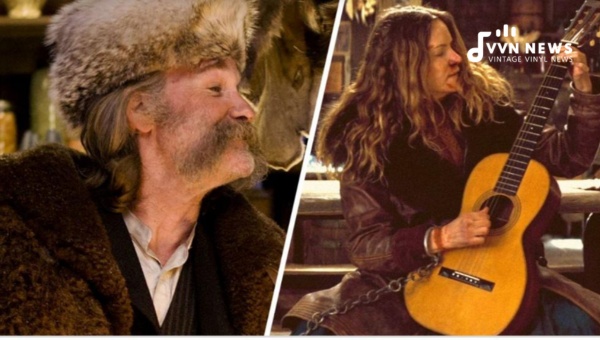
Before he grabbed headlines with the guitar-smashing incident, Kurt Russell had already etched his name in Hollywood’s Hall of Fame.
His reputation as a Hollywood rebel and boundary-pusher dates back to a career spanning over half a century.
Russell broke into acting as a youngster, featuring in Western series such as “The Travels of Jaimie McPheeters.”
He became Walt Disney’s officially designated “Golden Boy” within no time.
From playing upbeat characters in Disney films to opting for more daring roles like the armed robber in “Big Trouble in Little China,” Russell extended his range and showed a penchant for breaking barriers.
A Career of Eclecticism
From being an optimistic computer-programming whiz-kid in “The Computer Wore Tennis Shoes” to showcasing intense performances in flicks such as “Escape from New York,” ‘Silkwood,’ ‘Tombstone,’ and “Vanilla Sky,” Russell constantly demonstrated his versatility.
His fascinating career exhibits an eclectic mix of genres and performances designed to challenge conventions.
Over decades, his affinity for unconventional roles has only amplified his reputation as Hollywood’s onscreen rebel.
Memorable Portrayals
Known for constantly immersing deeply into his characters, some of Russell’s most memorable portrayals come from films like ‘Bone Tomahawk’ where he portrayed an aging sheriff, or ‘Breakdown’ where he played a distressed but determined husband.
Of course, one cannot forget the iconic ‘Overboard’ opposite Goldie Hawn, where their off-screen romance began.
Their relationship is seen as defying convention since they’ve been together for over three decades without feeling the need to validate their relationship through marriage –pushing boundaries off-screen.
The Tarantino Connection
Perhaps one segment that stands out in his illustrious career is his collaboration with Quentin Tarantino.
Russell has showcased vivid characters in multiple Tarantino films. His characters range from a ruthless stunt driver in ‘Death Proof,’ to a bounty hunter smashing a rare guitar in ‘The Hateful Eight,’ or an aging actor’s loyal stand-in in “Once Upon A Time In Hollywood.”
These performances bear testimony to the exciting and dynamic partnership between the two, seemingly feeding off each other’s ‘rebel energy.’
The Iconoclast Within
Beyond his acting prowess, Russell’s real-life persona also exhibits an iconoclastic streak.
He vocalized opinions that often go against prevailing norms, further solidifying his rebel image.
For instance, Russell is one of few actors who openly claimed libertarian views and assertive positions on issues like gun control.
Whether smashing antique guitars on-set or advocating for individual liberty, Kurt Russell has consistently demonstrated that he’s not just another face in Hollywood.
With his refusal to be typecast into stereotypical roles and this persistent rebelliousness both onscreen and off-screen – he’s indeed proving himself to be an irrepressible ‘Iconoclast.’
Also Read: 20 Close Encounters of Musicians And Ufos [If UFOs Are Real?]
Celebrity Meltdowns – When Stars Destroy Priceless Artifacts?
The world of glitterati, while dazzling and full of flashbulbs, is no stranger to scuffles, mishaps, or uncomfortable slip-ups.
These can range from trivial faux pas to severe instances where celebrities harm immeasurable artifacts in disarray.
As fans and spectators, we cannot help but watch these incidents unfold with bated breath.
Infamous Incidents
Here are a few instances when celebrities destroyed valuable items which sparked significant public debates and media frenzy:
- During a 2008 concert in Finland, Keith Urban was so absorbed in his performance that he smashed a priceless 1968 Martin D-28 guitar once owned by country legend Waylon Jennings. The frustrated expression painted over his face as he broke the piece of rock n’ roll history made every music enthusiast gasp.
- Similarly, renowned American pop artist Justin Bieber accidentally knocked over an ancient vase during a museum visit in Rome in 2015. The vase was an artifact dating back to Italy’s Etruscan era, and its destruction sent shock waves across the art lovers’ community globally.
- It’s not just male celebrities who have destroyed artifacts. Model Kate Moss reportedly ripped apart a £6500 Lucian Freud painting during an altercation with her then-boyfriend Pete Doherty. The irreparable loss of this artwork caused quite an outcry among art collectors and enthusiasts.
Impact on Public Perception and Media Frenzy
These incidents impact the public perception of the involved celebrity and instantly become media sensations, causing massive outrages or debates.
Shift in Public Image
Once renowned as talented artists or performers, these celebrities often see their image tainted due to these actions.
They are depicted as reckless or irresponsible owing to their momentary lapse of judgment, resulting in public criticism and denting the fanbase that often stood by them through thick and thin.
Media Frenzy
Additionally, such incidents become fodder for media outlets who revel in every detail of the occurrence.
These stories dominate news cycles, leading to heated panel discussions and debates about celebrity responsibility toward invaluable artifacts.
While celebrities might live a high life, their negligent actions leading to the destruction of priceless artifacts can have significant repercussions.
Not only do they face public backlash, but their actions result in the irrevocable loss of pieces that hold profound historical or cultural value.
This not only reiterates the importance of preserving these for future generations but also raises a question about our society’s obsession with celebrities and their actions.
A Glimpse into Antique Collecting Culture
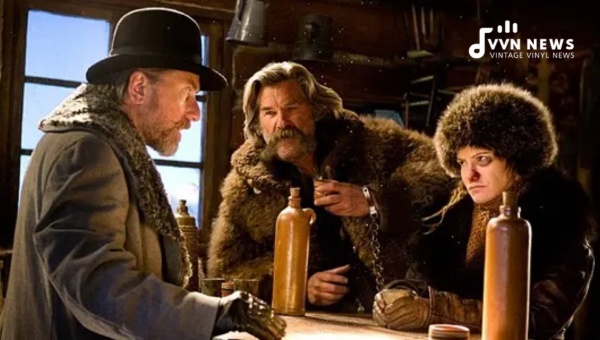
The allure of collecting antiques has fascinated people for centuries. They bear the imprint of history, telling stories often lost with time.
The realm of antique musical instruments is particularly intriguing, with a distinct capture of tales woven through time, sound, and rhythm.
Timeless Appeal
Antique instruments, such as violins, flutes, trumpets, and guitars, hold captivating charm.
Their intricate craftsmanship bespeaks an era long past; their essence carries traces of the artists’ creative genius who first brought those pieces to life.
Some collectors are smitten by their delicate designs and the world-class quality with which they were crafted.
Others feel an almost spiritual connection to these instruments – especially if they were once caressed by famous musicians whose inspiration gave birth to timeless melodies.
Unique Community Dynamics
Collecting antiques, when pursued seriously, goes beyond mere possession or display. It’s about understanding the value behind each piece in terms of heritage and utility.
Collectors from an entire community are held together by a shared passion for history and cultural reverence packaged within each artifact.
They celebrate their finds through exhibitions, forums, and auctions, encapsulating different eras of music history one event at a time.
Investing in Rare Artifacts
Investment in antiques – scarce musical instruments – can range from hundreds to thousands, even millions, of dollars. Why do people spend such vast sums?
Each device is a potential treasure chest; its value often soars over time due to rarity and because it carries a slice of human chronicle encapsulated within itself, which can never be replicated fully.
A priceless Stradivarius violin or a unique Martin guitar like the one Kurt Russell unwittingly smashed on set might seem expensive today but can bring exponential returns if preserved correctly over time – both monetary and sentimental.
Acquiring such exquisite pieces often symbolizes a respect for artistic mastery, a deep appreciation for musical history, and an investment in a tangible, eternally enchanting link to our past.
The world of antique musical instruments is a fascinating one ventured only by those genuinely passionate about preserving the magical notes of yesteryears and owning the physical remnants of our rich musical heritage.
Also Read: CD Baby’s 20th Birthday [$600 Million Empowering Artists]
Cultural Heritage vs Personal Expression
A contentious dichotomy arises at the crossroads of preserving cultural heritage and fostering personal autonomy for self-expression.
The Value of Cultural Heritage
Cultural heritage is an eternal monument to our history on Earth. It tells tales about societal evolution, individual genius, and collective experiences.
Artifacts such as the Antique Martin guitar are irreplaceable touchstones to our past – symbols of human achievements that have grown their worth with each passing era.
Whether it’s a centuries-old painting or a historic guitar, these are physical remnants of our yesteryears.
They help educate future generations about their predecessors’ accomplishments and witness the cultural journeys that help shape societies.
Allowing such cherished artifacts to be lost forever is akin to erasing chapters from a priceless history book.
Personal Expression: A Vital Component for Growth
While valuing and protecting cultural heritage is imperative, it isn’t mutually exclusive from personal expression.
Indeed, through passionate, unfiltered outpourings, new art forms often arise, and societal progress ensues.
Presentations might take various forms, including but not limited to paintings, performances, writings, or – in this case – an unrestrained on-screen moment reflecting the essence of a character.
In an actor’s lens like Kurt Russell’s, impulsive acts like smashing the guitar could be viewed not as a wrongful action but an expressive move fueling his gritty portrayal in “The Hateful Eight.”
Divergent Views: Destruction or Expression?
Is Russell’s act possibly a form of performance art itself? We can see how differing perspectives come into play here:
- From one angle, this act can appear as a reckless disposal of precious heritage.
- On the flip side, some might argue his spontaneous show of raw emotion enhanced the intensity and authenticity of his character.
Viewers’ reactions likely depend upon where they sit on the “preservation vs. personal expression” continuum.
For those heavily weighted toward heritage conservation, the act was unforgivable destruction.
Yet others, more attuned to artistic liberty, could interpret the act as an explosive demonstration of character immersion.
The controversy surrounding Russell’s action thus highlights a recurring cultural tension between keeping history intact and allowing for individual expressiveness – an endless dance between preservation and innovation.
The Aftermath – Consequences for Kurt Russell
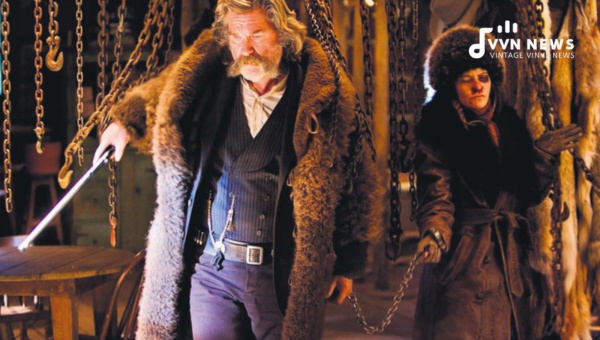
While the shock over Kurt Russell unknowingly smashing an antique Martin guitar on the set of “The Hateful Eight” took a while to subside, attention soon turned towards the aftermath and consequences for the Hollywood icon himself.
Legal Implications
There were no reported legal implications for Kurt Russell over the incident, primarily because it was deemed accidental.
It is essential to remember that many states have laws to protect art and historical artifacts, with strict penalties if they are intentionally damaged or destroyed.
Moreover, negligence or ignorance doesn’t necessarily remove culpability. Thus, even accidental damage to historically significant items or artworks can potentially lead to lawsuits against those responsible, with hefty fines or even imprisonment as probable penalties.
Given all these legal considerations, it was rather fortunate that this unfortunate incident on a movie set didn’t cause any severe or far-reaching legal complications for Kurt Russell.
Public Backlash
Russell faced mixed reactions from the public post-incident. Music and history enthusiasts deemed his action outrageous and irreverent, while his fans maintained it was an honest mistake.
Most blamed poor communication between the props department and actors rather than directly accusing Russell.
As with any controversy involving beloved celebrities, it wasn’t too long before satire took center stage amidst this din of serious conversations.
Memes started circulating on Social Media platforms, with many individuals joking about other historical artifacts that could be next on Russell’s destruction list!
That’s not forgetting countless discussions among music fans expressing despair over an antique piece’s loss.
Efforts to Repair or Restore The Damaged Guitar
C.F Martin & Co., stewards of the destroyed Martin guitar, made it clear they weren’t considering any attempts at restoration.
Instead of trying to put together a possible jigsaw puzzle of splintered wood from an artifact over 100 years old, they requested that all pieces be returned to them.
The shattered remains of the guitar now feature in the company’s museum, serving as a solemn reminder of the guitar’s dramatic end.
Boak declared that it was beyond repair — much like his trust in lending out antiques.
Russell was crestfallen by the extent of the damage he had caused unwittingly. In an interview, he confessed that the tragic incident had left him with a bitter taste and is something he deeply regrets not preventing.
This entire saga urges individuals, filmmakers included, to respect and acknowledge historical items’ value and significance.
The incident also highlights how a lapse in communication can culminate into an irreversible tragedy – even on a film set.
High standards always need to be upheld when handling precious and irreplaceable artifacts.
After all, as we saw from Russell’s ordeal, no one wants to be responsible for smashing a piece of history – literally or figuratively.
FAQs About Kurt Russell
Who is Kurt Russell?
Kurt Russell is a renowned American actor known for his roles in various Hollywood blockbusters like “Escape from New York” and “Guardians of the Galaxy Vol. 2”.
What’s the significance of Martin’s guitars?
Martin guitars are esteemed in the music industry for their superior quality and craftsmanship, making them a favored choice among musicians across various genres.
What was the movie where an antique Martin guitar was smashed?
The incident occurred on the set of Quentin Tarantino’s film titled “The Hateful Eight.”
Did Kurt Russell intentionally smash a real Martin guitar on set?
No, it wasn’t intentional. Due to an unfortunate miscommunication on set, Russell believed he was smashing a replica.
What was the incident’s aftermath involving Kurt Russell and the antique Martin guitar?
The film’s production offered their apologies to C.F. Martin & Co., who were understandably upset by the incident, and they decided they won’t be lending out any more antiques to movie sets in the future.
Conclusion
Indeed, we can all agree that Kurt Russell’s scene in “The Hateful Eight” will be remembered by movie and music lovers for a very long time.
The incident serves as a stark reminder of the consequences of miscommunication and the irreplaceability of historical artifacts.
Yet, through all its dramatics, it also underscores that live performance – film or music – is a realm where anything can happen, adding to Hollywood movie-making’s raw and unpredictable nature.
